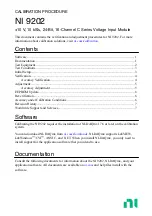
145
Programming examples – Fixed-wing models
»Model type« (page 52)
M O D E L T Y P E
M o t o r
N o n e
T a i l t y p e
N o r m a l
A i l e r o n / c a m b e r f l a p s
2 A I L 2 F L
B r a k e O f f s e t + 9 0 % E n t e r 1
S E L
S T O
s
In the “Brake” section, fi rst move the Ch1 stick to the
position at which this airbrake mixer is to be trigge-
red – normally “forward” – then select
STO
and con-
fi rm the threshold point with a brief press on the rota-
ry control.
If you now move the Ch1 stick
beyond
this point, the
elevator follows the movement to the extent defi ned
by the mixer ratio you have set.
Below
this point the
mixer is inactive; you can select a “dead zone” for this
if required.
Airbrake mixer (crow setting)
The “Brake
3 Elevator”, “Brake
5 Aileron” and
“Brake
6 Flaps” mixers can be set up in such a way
that the ailerons 2 + 5 defl ect up and the fl aps 6 + 7
move down, while an elevator trim correction occurs
automatically (see »
Wing mixers
« section, page 87).
To make the inboard fl aps 8 + 1 follow, you need to
set up a further free mixer, “Ch1
8”.
This mixer causes the inboard fl aps to follow in the
same direction, according to the position of the Ch1
stick.
Ideally the neutral point (offset) of this linear mixer
will be located at the position on the Ch1 stick travel
which you have defi ned as the offset point in the “Bra-
ke” line of the »
Model type
« menu (see left-hand co-
lumn).
However, you may fi nd that the programming you
have already completed has already “used up” the
four linear mixers available. In this case switch to the
menu …
»Free mixers« (page 102)
L i n e a r M I X 2
E L 8 = >
L i n e a r M I X 3
E L 8 = >
L i n e a r M I X 4
C 1
9 = >
C u r v e M I X 5 C 1 8 = >
t y p e f r o m t o
A d j u s t
S E L
t
s
S E L
… and select a curve mixer.
Move to the second screen page, and start by erasing
reference point 1 by moving to this point and pressing
the
CLEAR
button at the side. Now move the Ch1
stick to the “Airbrakes retracted” position and set the
associated reference point to “0%”.
Move the Ch1 stick in the direction of “Airbrakes ex-
tended” and place the second reference point at the
required value.
This procedure sets up a linear mixer which only be-
comes effective when you extend the airbrakes, e.g.:
C u r v e M I X 5 C 1 8
I n p u t
- 1 0 0 %
C u r v e
O u t p u t
- 5 0 %
o f f
P o i n t L
- 5 0 %
®
O
U
T
P
U
T
-
+
10
0
Note:
Naturally you could also set up a control curve for the
pair of wing fl aps 8 + 1 by defi ning additional refe-
rence points.
Reduction of aileron and fl ap differential (servos 2
+ 5 and 6 + 7)
To improve aileron response in the crow confi guration
we recommend that you set up automatic suppressi-
on of any programmed aileron differential.
This is achieved using the “Differential reduction”
point in the »
Wing mixers
« menu; this function con-
tinuously reduces aileron differential to the set level
when you move the Ch1 stick to deploy the wing fl aps
to the “crow” position. See page 88 for more details.
Aileron differential for the inboard fl aps (servos 8
+ 1)
You can set up differential travel of the secondary
fl aps 8 + 1 when an aileron command is given by se-
lecting the »
Dual mixers
« menu (see above).
It is not possible to set differential reduction for the
wing fl aps 8 + 1 using the method described abo-
ve. This is not usually necessary for the inboard wing
fl aps in any case.
Summary of Contents for MC-22S
Page 1: ...1 mc 22s GB mc 22s 3D Rotary Programming System Programming manual ...
Page 33: ...33 Digital trims ...
Page 55: ...55 Program description Base setup model ...
Page 77: ...77 Program description Flight phases ...
Page 89: ...89 Program description Mixers ...
Page 174: ...174 ...
Page 175: ...175 ...
Page 176: ...176 ...
Page 177: ...177 ...
Page 178: ...178 ...
















































